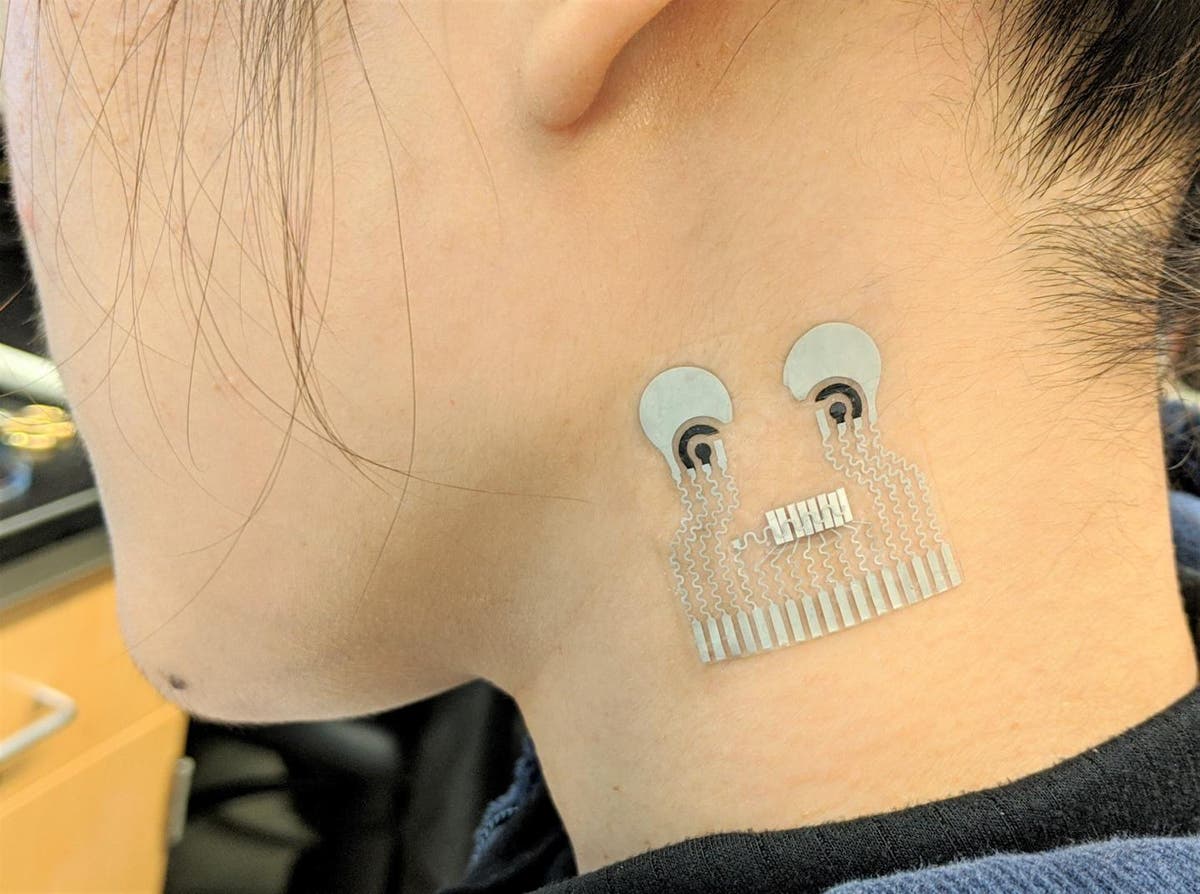Scientists have developed a small soft patch that can be placed on people’s skin – and read a lot of information about their bodies.
The patch is about the size of a postage stamp, but it is able to provide information about their vital signs, as well as even find out what they drank or ate, the researchers say.
In addition to continuously monitoring his blood pressure and heart rate, he can also see the amount of glucose, lactate, alcohol or caffeine in the blood, scientists say.
As such, it represents a major breakthrough in wearable technology, which aims to measure data about a person’s body and use it to improve their health and fitness.
It can also be used on patients who would otherwise be difficult to track, say the researchers – including children.
“This type of wearable would be very useful for people with underlying medical conditions to monitor their own health regularly,” said Lu Yin, a Ph.D. in nanoengineering. UC San Diego student and co-author of a new study detailing the research needed to patch.
“It would also serve as a great tool for remote patient monitoring, especially during the COVID-19 pandemic, when people are minimizing personal visits to the clinic.”
Existing sensors – which are integrated into consumer devices such as Apple Watches – are able to monitor people’s heart rate and the amount of oxygen in their blood. More specialized devices allow more specific monitoring, such as glucose levels for diabetics.
But the researchers say the new patch allows it all at once – and without the invasive and potentially disruptive procedures needed to do so, which may include placing catheters in people’s arteries.
Although all sensors are brought together in the patch, it requires highly specialized engineering for each of its different readings. To feel lactate, caffeine and alcohol, for example, the patch releases a drug on the skin to make it sweat and then examines the sweat itself for chemicals.
Although all of this technology was integrated into the small patch, in tests that included drinking alcohol and exercising, the performance was as good as specialized equipment, such as blood pressure meters and breathalyzers, the researchers say.
The new research is the result of two different efforts at the UC San Diego Center for Wearable Sensors. It combines work to develop new wearables that can monitor a series of different signals at the same time, watching everything from chemical changes to electrophysiological changes; this was combined with separate work that sought to create soft, elastic patches that can go to the skin and monitor blood pressure within the body.
The new study, published in Nature Biomedical Engineering, combines these two efforts to create a patch that can be easily glued to the skin while collecting a variety of different information, say the researchers.
Now they hope to be able to add more sensors, including giving the patch the ability to detect certain diseases. They also hope to make the sensor smaller and allow it to be disconnected from the power supply and display needed to allow it to function, with the aim of making the “system complete and fully usable”.
